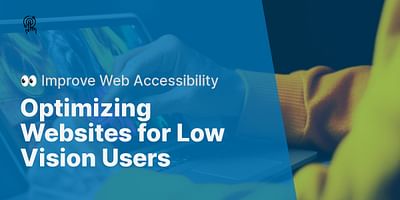Peter is a committed product manager, specializing in the development of technology designed to aid individuals with disabilities. His portfolio boasts a range of projects that leverage AI and machine learning to enhance accessibility. Peter continually seeks innovative methods to make technology more inclusive and accessible.
Answer: Thank you for your interest in helping people with disabilities access technology and assistive devices. There are several ways you can get involved and make a positive impact in this field. Here are some suggestions to get you started:
1. Volunteer at local organizations: Reach out to local disability organizations, community centers, or schools to see if they have any volunteer opportunities related to technology and assistive devices. You can offer your skills and expertise to help individuals with disabilities learn how to use technology or assist in setting up accessible devices.
2. Join online communities: Participate in online communities and forums dedicated to assistive technology and disabilities. These platforms provide a space for individuals to share their experiences, ask questions, and seek advice. By actively engaging in these communities, you can offer support, share knowledge, and connect with others who are passionate about accessibility.
3. Advocate for accessibility: Raise awareness about the importance of accessibility in technology by advocating for inclusive design and policies. You can write to your local representatives, attend public meetings, or join advocacy groups that focus on disability rights and accessibility. By voicing your concerns and sharing your knowledge, you can help drive positive change in your community.
4. Contribute to open-source projects: Many open-source projects are dedicated to developing accessible technology and assistive devices. If you have coding skills or expertise in a related field, consider contributing to these projects. By collaborating with others, you can help create innovative solutions that benefit people with disabilities.
5. Support assistive technology initiatives: Stay informed about the latest developments in assistive technology and support initiatives that aim to make technology more accessible. This can include donating to organizations that provide assistive devices to individuals in need or supporting research projects that focus on improving accessibility.
6. Offer training and workshops: If you have expertise in using assistive technology or accessible design, consider offering training sessions or workshops to individuals with disabilities, educators, or organizations. By sharing your knowledge and skills, you can empower others to use technology effectively and independently.
7. Stay updated on accessibility guidelines: Familiarize yourself with accessibility guidelines such as the Web Content Accessibility Guidelines (WCAG) and the Americans with Disabilities Act (ADA). By understanding these guidelines, you can ensure that the technology and websites you create or use are accessible to people with disabilities.
Remember, making technology accessible is an ongoing process, and every effort counts. By getting involved and supporting initiatives that promote accessibility, you can help create a more inclusive and empowering world for people with disabilities.















